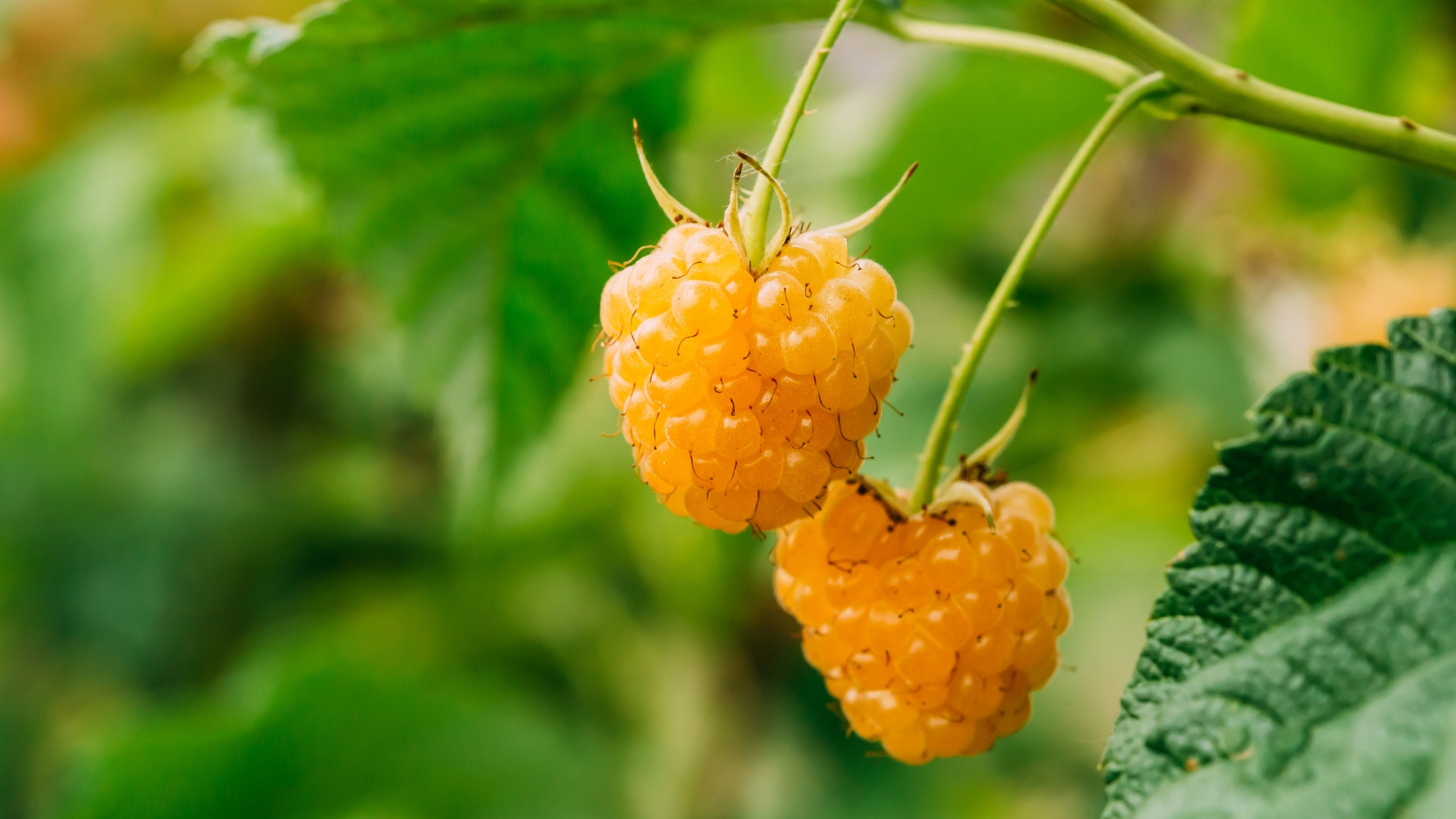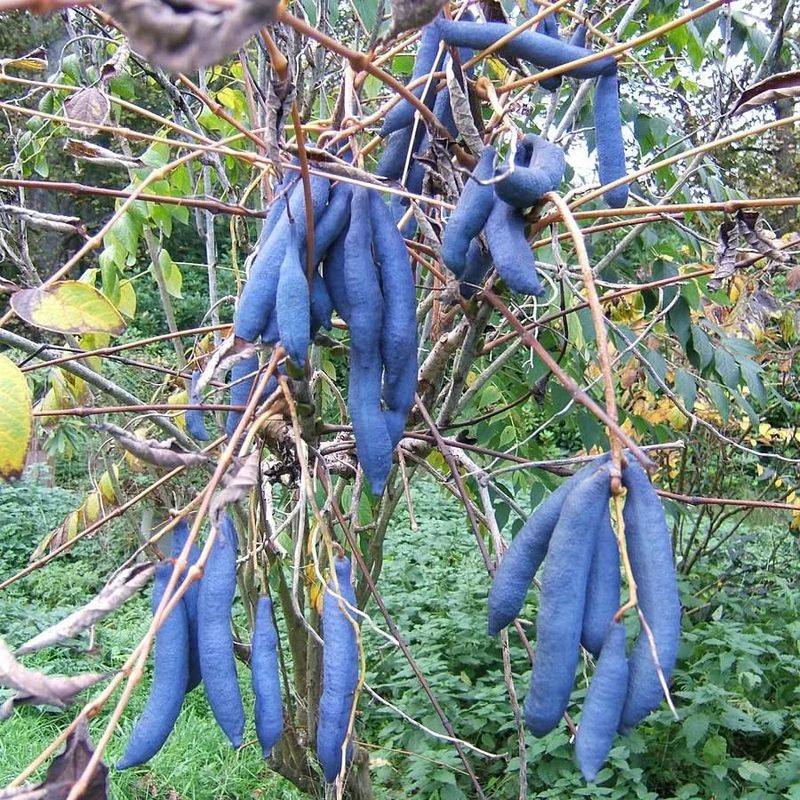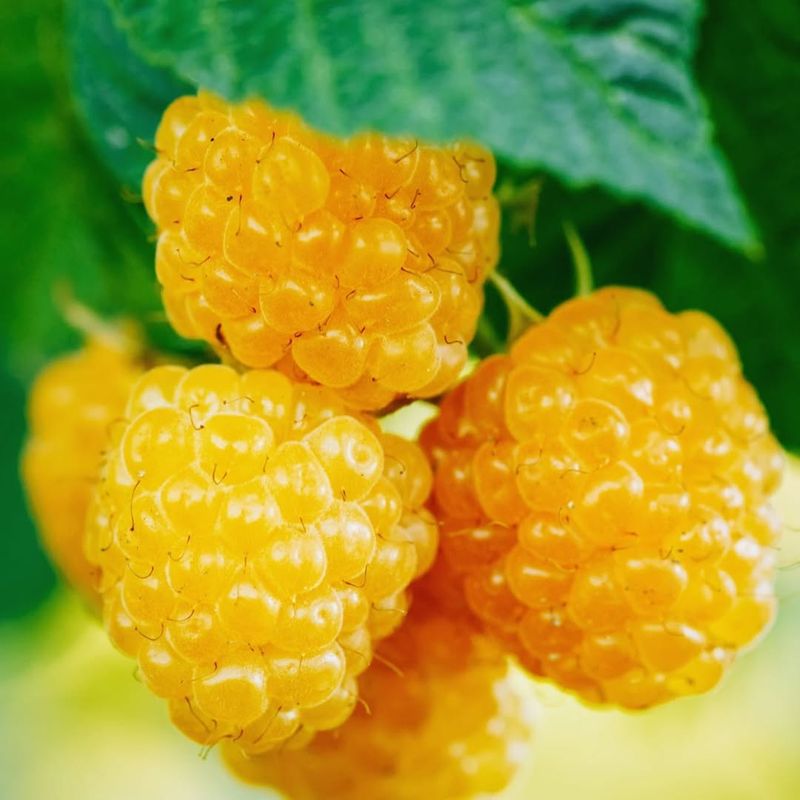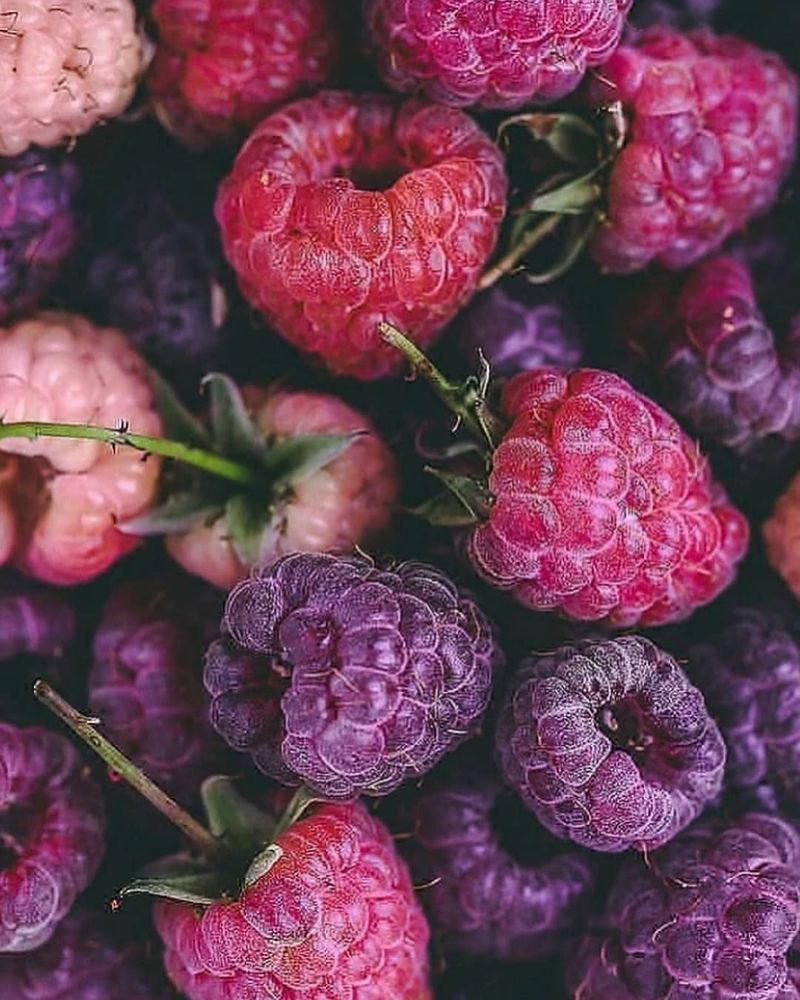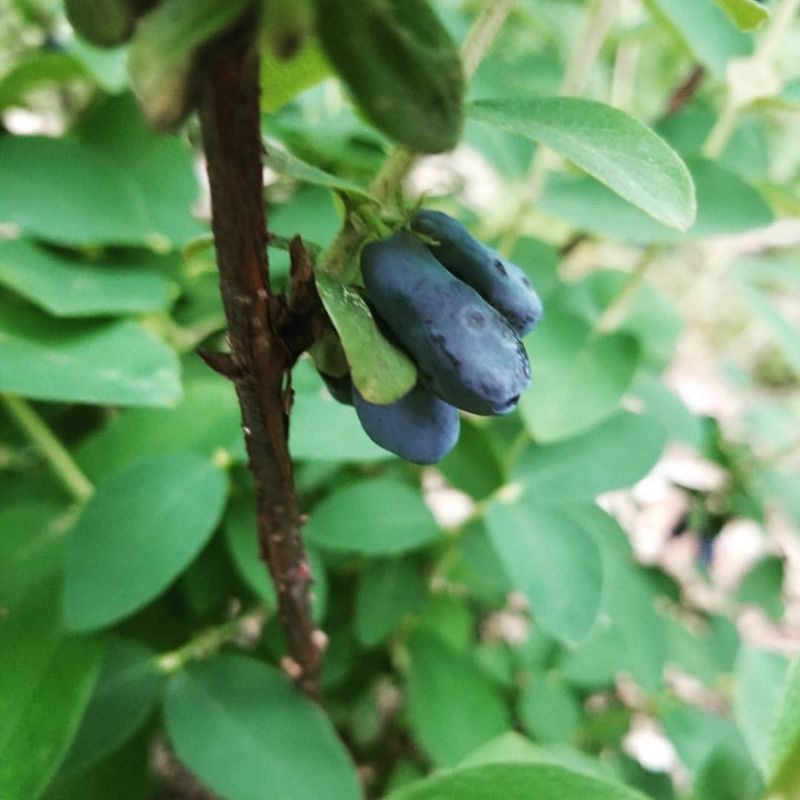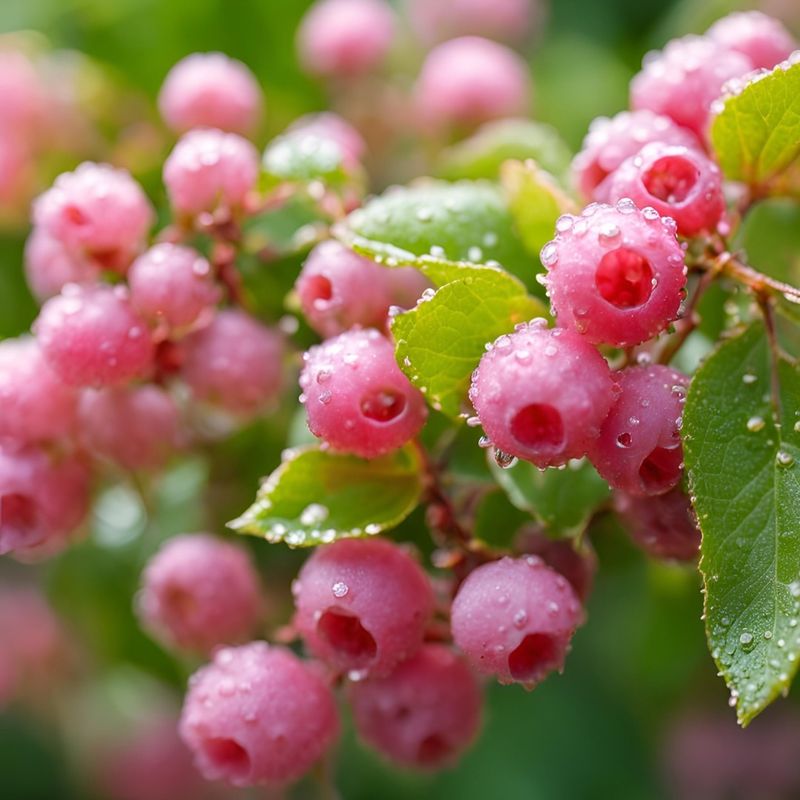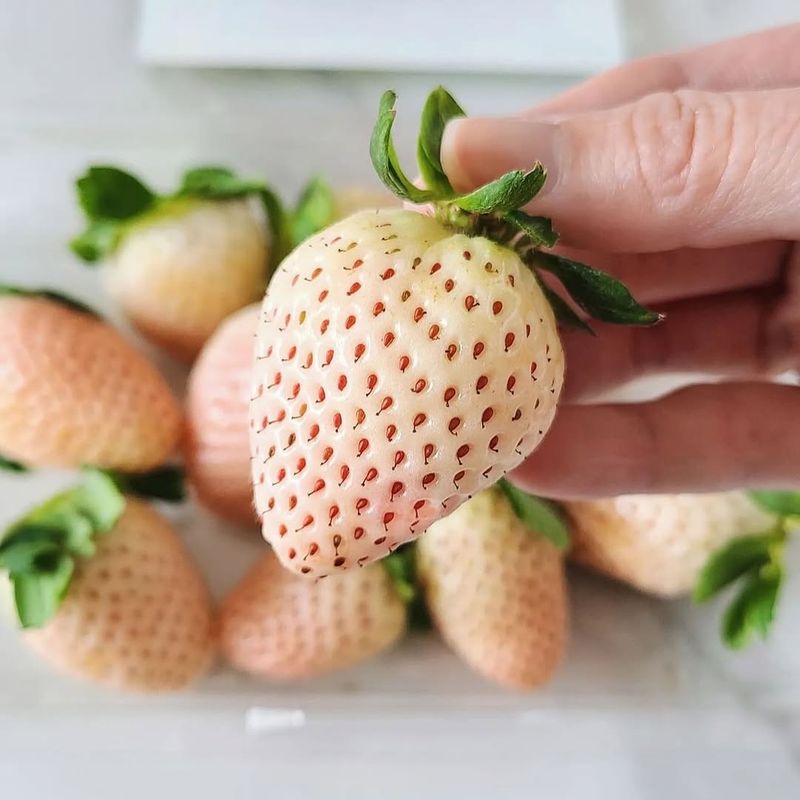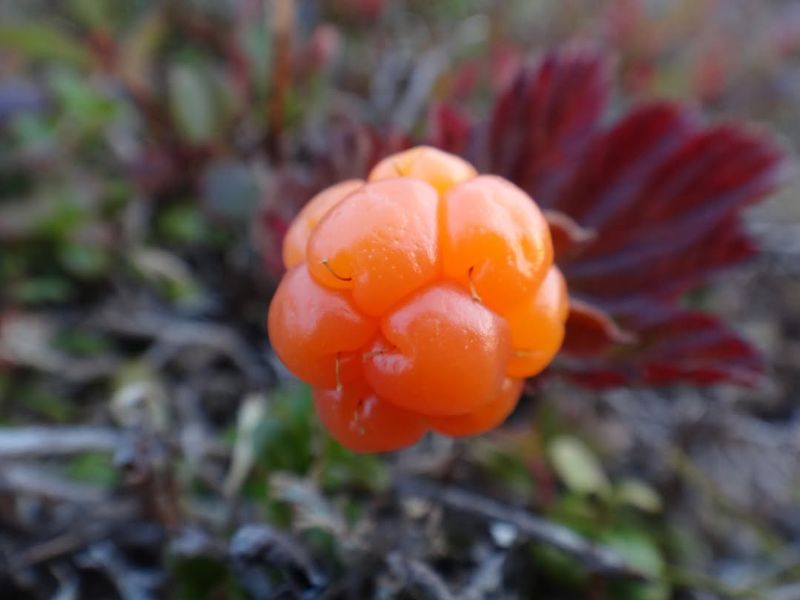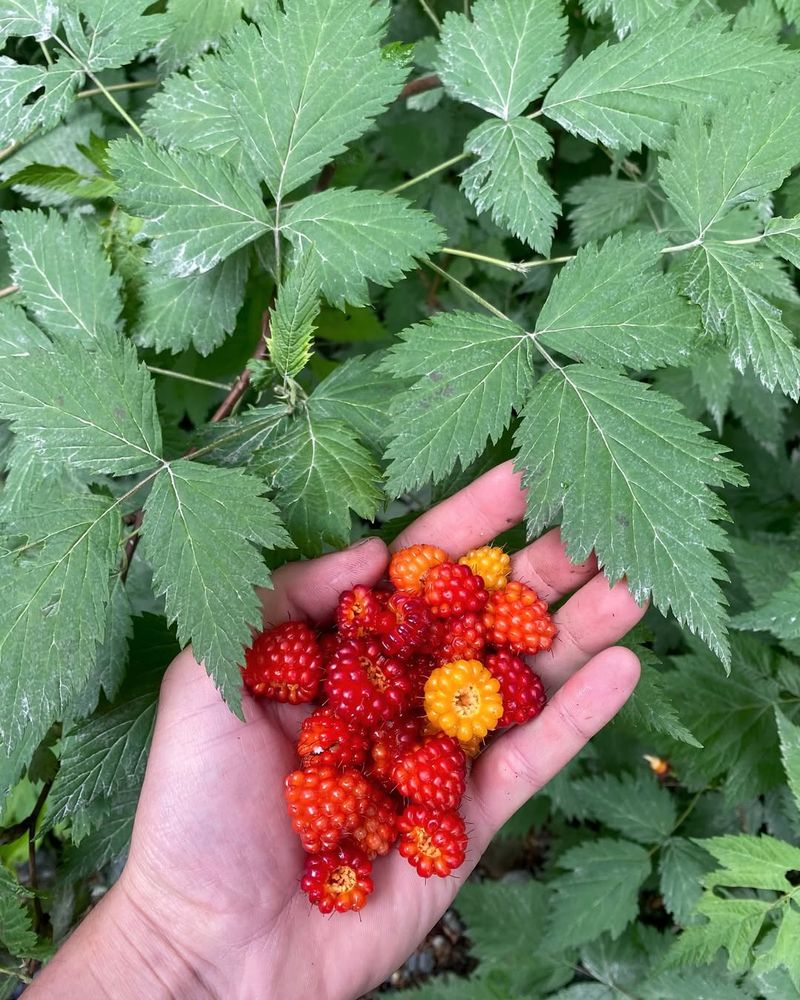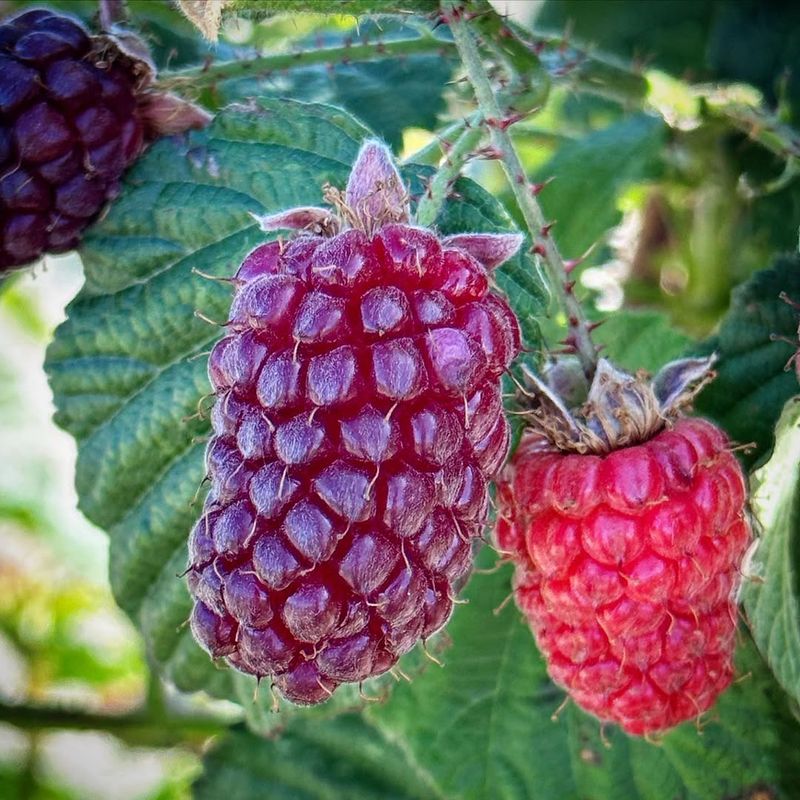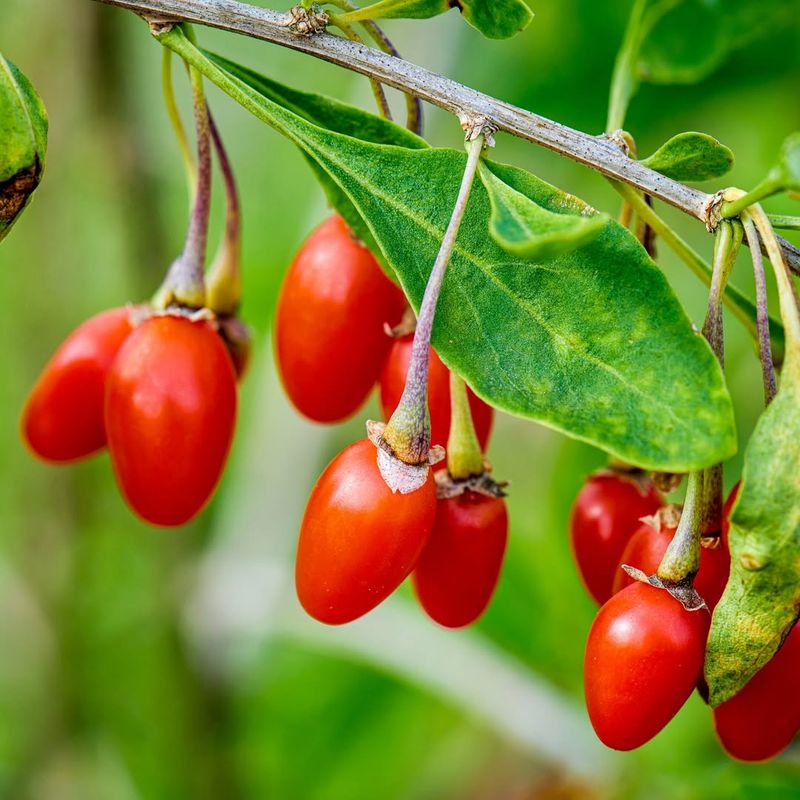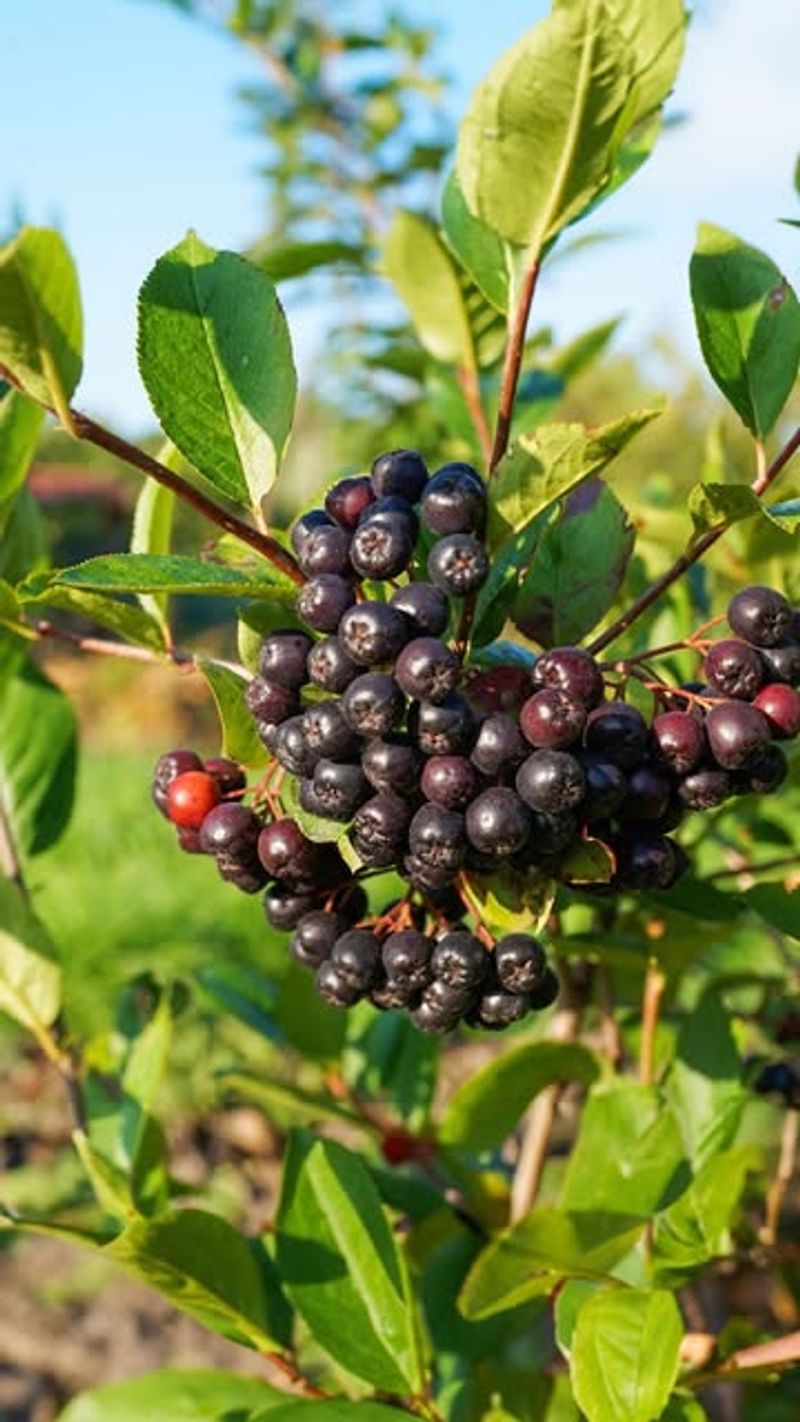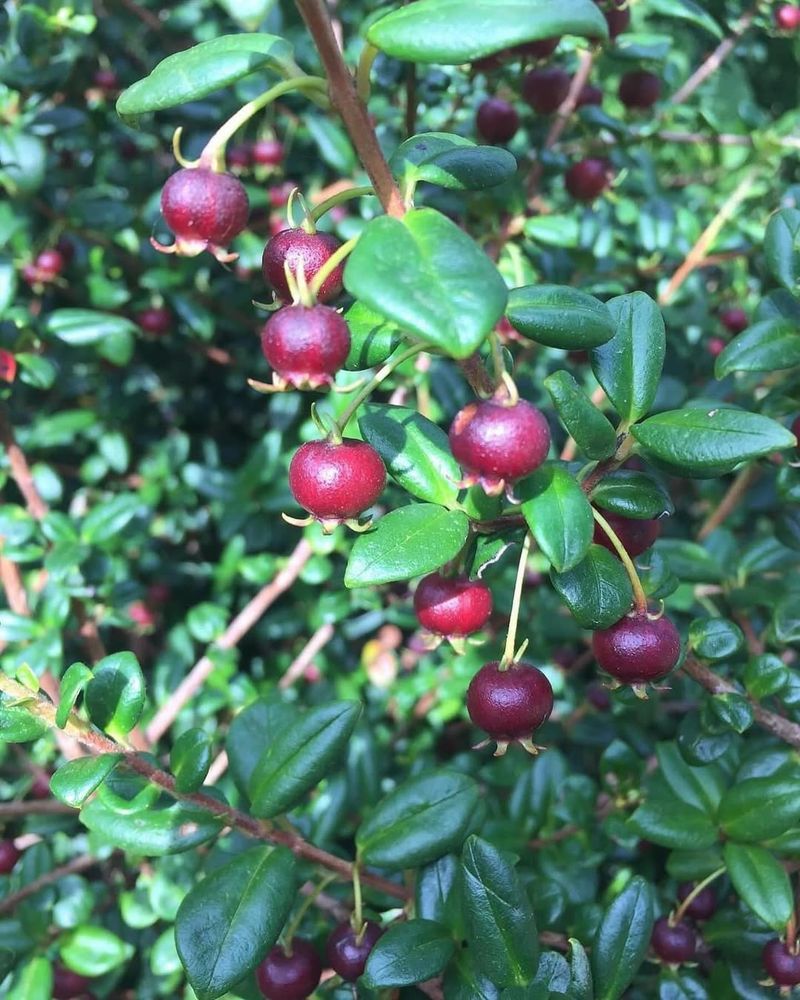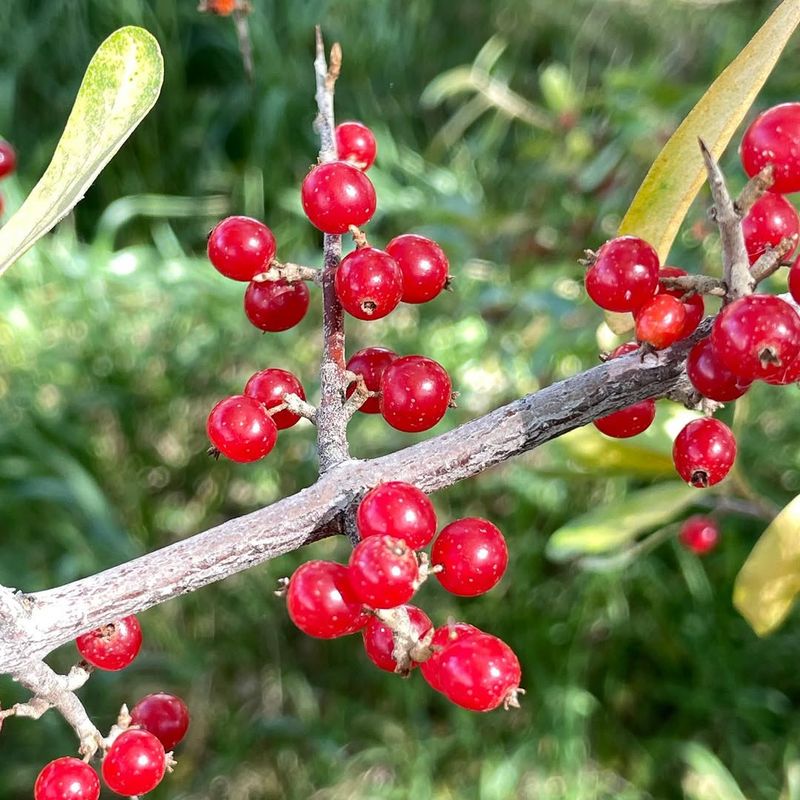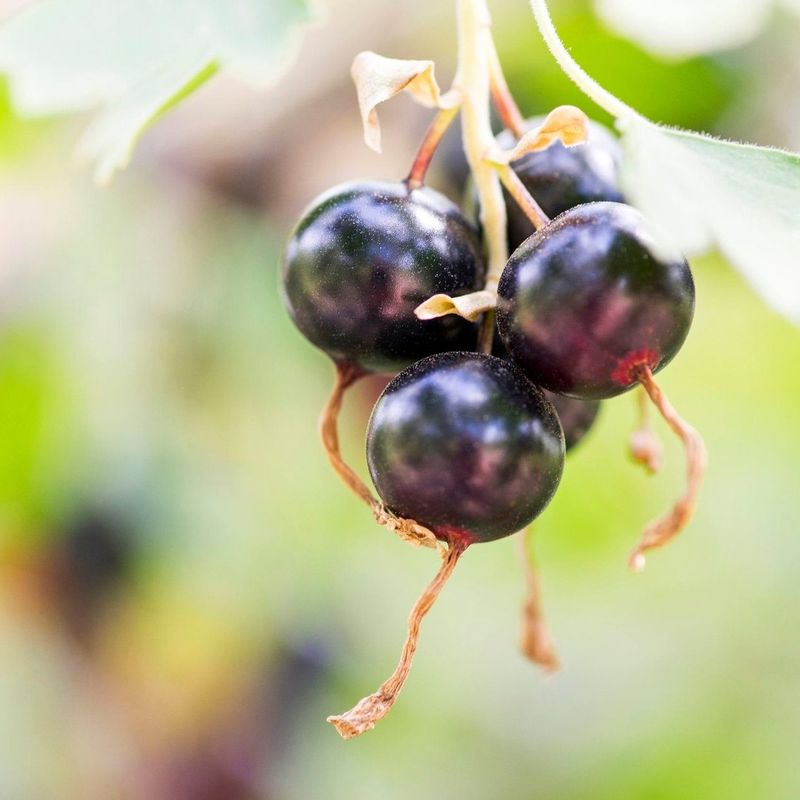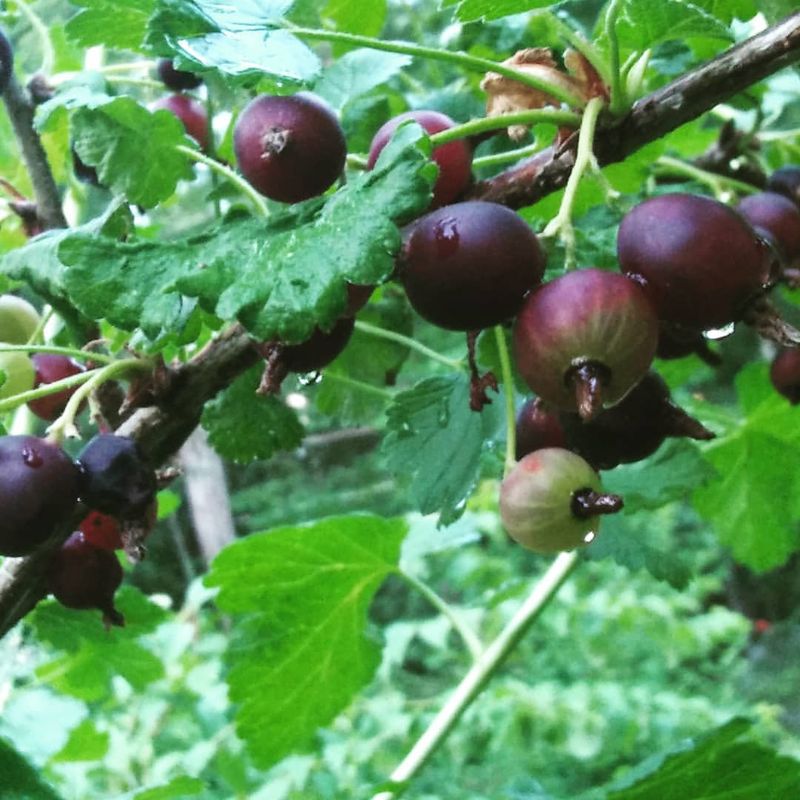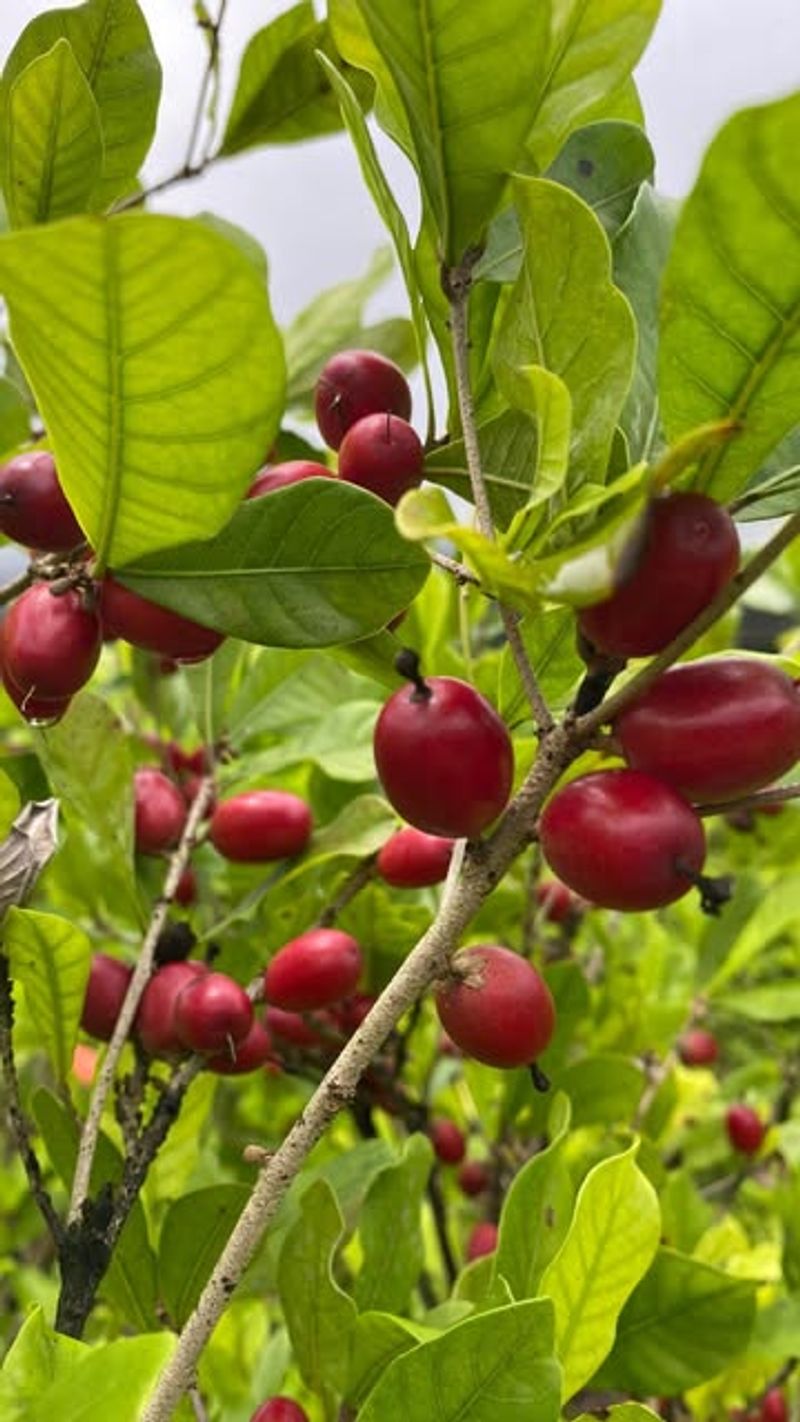Turn your garden into a feast for the senses with these extraordinary berry bushes! Forget the usual suspects—these vibrant, flavor-packed plants bring wild colors, unexpected tastes, and a touch of the exotic to your backyard.
Whether you’re after electric-blue berries, citrusy surprises, or fruit that plays tricks on your taste buds, this list will take your garden (and your snacking game) to the next level. Get ready to grow something truly jaw-dropping, mouthwatering, and totally unique!
1. Blue Sausage Fruit
Prepare to be mesmerized by the metallic blue pods that hang like futuristic ornaments. The blue sausage fruit, or Decaisnea fargesii, isn’t just a visual treat.
Its jelly-like pulp offers a unique texture that intrigues the senses. Thriving in temperate regions, this bush adds an exotic flair to gardens. Taste-wise, it’s subtly sweet, making it a surprising addition to culinary adventures.
2. White Mulberry
Pale, almost ghostly berries dangle from this hardy tree, offering a visual treat. The white mulberry, Morus alba, is not just for show; its sweetness is unparalleled among its kin.
Unlike its darker relatives, these berries played a pivotal role in silk production history, with silkworms feeding on its leaves. Their unique taste makes them a favorite for fresh consumption. It’s a tree that brings both beauty and historical depth to your garden.
3. Golden Raspberry
A golden hue that promises more than visual appeal awaits in these berries. The golden raspberry, Rubus idaeus ‘Fall Gold’, delights with a flavor reminiscent of traditional raspberries but with a sweeter twist. Their resilience in various climates makes them a gardener’s delight. Perfect for fresh eating or culinary creations, they offer versatility. Cultivating them is both rewarding and straightforward, enhancing any garden.
4. Purple Raspberry
Rich in color and taste, these berries captivate the senses. The purple raspberry, Rubus occidentalis, strikes a perfect balance between tartness and sweetness. They thrive in well-drained soils, offering gardeners an easy-to-grow option. Enjoy them fresh, or use them in jellies and desserts for a burst of flavor. Their unique profile makes them a standout in any berry assortment.
5. Honeyberry
A blend of blueberries mingled with honey zest characterizes these berries. Known as honeyberry, Lonicera caerulea, its elongated shape and deep blue hue are distinct.
Its complex flavor profile is a delight for adventurous palates. Preferring cooler climates, they are a hardy addition to any garden. Loaded with nutrients, they serve as both a tasty and healthful snack.
6. Pink Lemonade Blueberry
A burst of pink sets these blueberries apart, adding a whimsical touch to any garden. The pink lemonade blueberry offers a sweet-citrus flavor that surprises and delights. Its unusual color makes it a conversation starter among berry enthusiasts.
Ideal for both fresh eating and baking, they add zest to your culinary pursuits. Growing them is straightforward, offering a playful twist to the traditional blueberry.
7. White Strawberry (Pineberry)
A tropical twist in both appearance and taste describes this berry. Known as pineberry, this Fragaria × ananassa variety offers a pineapple-like flavor unlike traditional strawberries.
Its white hue contrasts sharply with the typical red, creating visual intrigue. Ideal for fresh consumption, they require similar care as typical strawberries. Their unique taste and look make them a garden favorite.
8. Cloudberry
Golden-orange jewels peek from low-growing plants, offering a rarity in the berry world. The cloudberry, Rubus chamaemorus, thrives in Arctic habitats, rich in tart, honey-like flavor.
Traditionally valued in northern cuisines, they bring cultural depth to gardens. Their striking color and complex taste make them a prized addition. Best enjoyed fresh or in preserves, they are a true delicacy.
9. Salmonberry
A vibrant splash of orange and red hues marks these berries as unique. The salmonberry, Rubus spectabilis, offers a mild, floral taste that’s both refreshing and delightful. These berries play a crucial role in North American ecosystems, supporting wildlife.
Foraging for them is a rewarding experience, with culinary applications ranging from fresh snacks to jams. Their striking appearance and ecological importance make them a top pick.
10. Japanese Wineberry
A slight stickiness adds intrigue to these vibrant berries. The Japanese wineberry, Rubus phoenicolasius, charms with its tangy-sweet flavor profile.
Known for its historical roots and ease of cultivation, it compares favorably to traditional raspberries. Perfect for fresh eating or in desserts, it offers versatility. This berry bush offers a pop of color and taste to any garden space.
11. Tayberry
A strikingly elongated form distinguishes this berry from its peers. The tayberry, a hybrid of raspberry and blackberry, offers a rich, sweet-tart flavor.
Its deep red color adds visual appeal and makes it a favorite for culinary uses. Enjoy them fresh or in jams and desserts for a taste delight. Their unique cross-breeding brings the best of both berry worlds.
12. Goji Berry
Brightly colored and packed with benefits, these berries shine as a superfood hero. Known as the Goji berry, Lycium barbarum offers a slightly bitter, herbal taste.
Their antioxidant properties make them a sought-after addition to health-focused diets. Whether in smoothies or dried snacks, they add a nutritious punch. Their vibrant appearance and health benefits make them a garden standout.
13. Aronia Berry
Deeply hued and intensely flavored, these berries offer a unique experience. The aronia berry, Aronia melanocarpa, is noted for its strong astringency.
Rich in antioxidants, they are a key ingredient in health-conscious juices and diets. Their intense flavor makes them ideal for culinary experimentation. As a garden addition, they bring both beauty and health benefits.
14. Chilean Guava
Tiny and red, these berries pack a sweet punch reminiscent of candies. The chilean guava, Ugni molinae, offers a subtle spiced flavor. Historically connected to Queen Victoria, it’s a bush rich in both taste and story.
Perfect for enjoying fresh or in desserts, they provide versatility. Easy to grow, they add historical and culinary depth to gardens.
15. Buffaloberry
Silvery-red and tart, these berries offer a citrusy twist. The buffaloberry, Shepherdia argentea, is known for its traditional uses by Indigenous communities.
Their bold, tart, and slightly astringent flavor with citrusy and cranberry-like notes makes them ideal for both fresh eating and culinary experimentation. These berries add cultural richness and taste to any garden. Easy to cultivate, they are a delightful addition to the plant collection.
16. Blackcurrant
A musky depth characterizes these berries, offering a flavor unlike any other. The blackcurrant, Ribes nigrum, is celebrated in culinary circles for jams and syrups.
Its traditional uses in herbal remedies add a layer of historical intrigue. Perfect for fresh use or in cooked dishes, it provides versatility. This bush enriches gardens with its dual-purpose nature.
17. Jostaberry
A hybrid wonder graces gardens with these berries. The jostaberry, Ribes × nidigrolaria, merges gooseberry and blackcurrant traits. Its deep purple color and sweet-tart taste create a unique palate experience.
Known for disease resistance, it’s a gardener’s ally. Enjoy them fresh or in culinary creations for a distinctive flavor burst.
18. Serviceberry
A resemblance to blueberries marks these berries, adding subtle intrigue. The serviceberry, Amelanchier spp., offers almond-like undertones that delight the senses.
They are valued in both gardens and wildlife habitats for their beauty and utility. Perfect for fresh consumption, they also adapt well in cooked dishes. These berries enhance natural landscapes with their presence.
19. Sea Buckthorn
A tart, citrusy burst characterizes these tiny bright berries. The sea buckthorn, Hippophae rhamnoides, is renowned for its vitamin C content (containing up to 15 times more than oranges)
Used in juices and skincare, it offers versatility beyond the garden. Its vibrant color and health benefits make it a standout choice. Cultivating them adds zest to your garden both visually and nutritionally.
20. Miracle Berry
Prepare for a taste-altering adventure with these berries. The miracle berry, Synsepalum dulcificum, temporarily changes taste perception, making sour foods sweet.
It’s a scientific marvel with fun culinary applications. Enjoy them fresh for a unique experience that surprises and delights. Their presence in gardens adds a touch of magic and intrigue.

